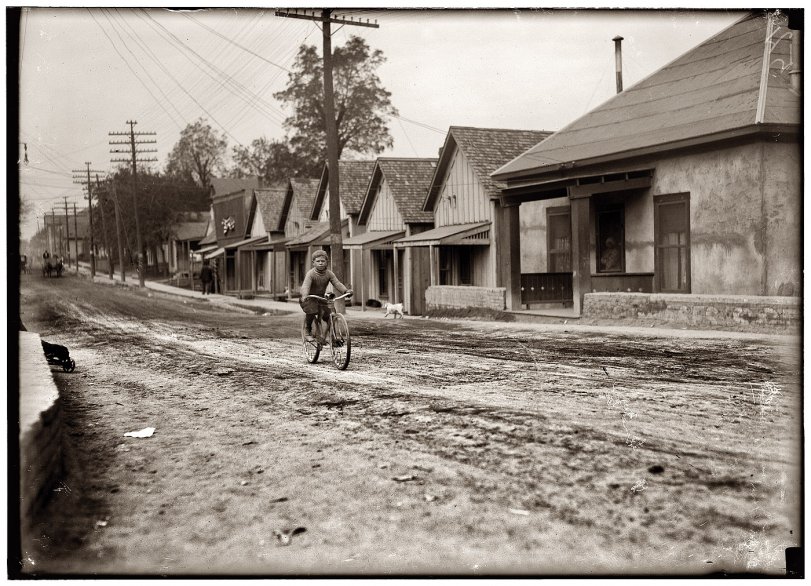


Framed or unframed, desk size to sofa size, printed by us in Arizona and Alabama since 2007. Explore now.
Shorpy is funded by you. Patreon contributors get an ad-free experience.
Learn more.

- Illuminate us
- I remember it well
- I can't prove it
- Complicated then, forgotten now
- Bryan-Stevenson
- Skinny is as skinny does
- How do you rest in peace
- Riding the footboards
- Alas, hidden from view
- Baldwin Diesels
- Exclusive pump
- Bananas, Oysters and Smokey Joe
- Details, Details
- What's that building to the left of the tower?
- Coal Barges
- Bromo-Seltzer
- Inner harbor
- The Basin
- What a headache!
- Giant stepladder?
- Yeah, it was cold
- Love those coats
- Link & Pin Days Remnant
- Baldwin 62303
- Baldwin VO-1000
- Cold
- No expense spared
- Tough Guys
- What's your hurry, where's your hat?
- Sheriff's Signature
Print Emporium
Waco Red Light: 1913

A long shot of 12-year-old Isaac Boyett in the Red Light District of Waco. View full size. Scanned from glass-plate negative. Photograph by Lewis Wickes Hine.
In the house on the right is
In the house on the right is the shadow of a woman looking out onto the street. Watching the man, who's watching the boy, who's watching the man...
Wires, wires everywhere
While seeking directions to the Susquehanna Hat Company, Frank3 wondered if Waco, Texas, in 1913 "had their own repair crew in case one of those things came crashing down, or would they have had to get service from a neighboring town."
According to the Handbook of Texas Online, in 1900 Waco was the sixth largest city in Texas (and probably fifth a year later due to the devastation of the state's then-largest city, Galveston, in a hurricane).
Further, "By 1914 Waco had grown to about 35,000 residents and was becoming an important center of the state's insurance industry."
Sounds like Waco was plenty large enough to have repairmen living there. And a century ago the neighboring towns were small farming villages, unless you went 90 miles north to Dallas and Fort Worth, or 90 miles south to Austin.
More interesting is that Waco, home of Baylor University (Southern Baptist) and prior home of Texas Christian University, even had a red light district. That changed during The Great War when 35,000 troops were stationed at newly established Camp MacArthur. According to the above cited Handbook, "Encouraged by the United States Army's attempts to eliminate temptations for the soldiers, the city's ministers and others waged an anti-prostitution campaign in 1917, and the "Reservation" was shut down.
Isaac Boyett would have been 16 by that time, and perhaps out of a job. Perhaps he joined the war effort against the Bosch?
Wires, wires everywhere
Look at all those wires strung up! I wonder if Waco at the time had their own repair crew in case one of those things came crashing down, or would they have had to get service from a neighboring town.
An interesting list would be to compare types of professions from 1900 to 2000 and see what has disappeared or been created in that time. Telephone workers, still here (although much more advanced).
"How do I get to the Susquehanna Hat Company?"
























On Shorpy:
Today’s Top 5